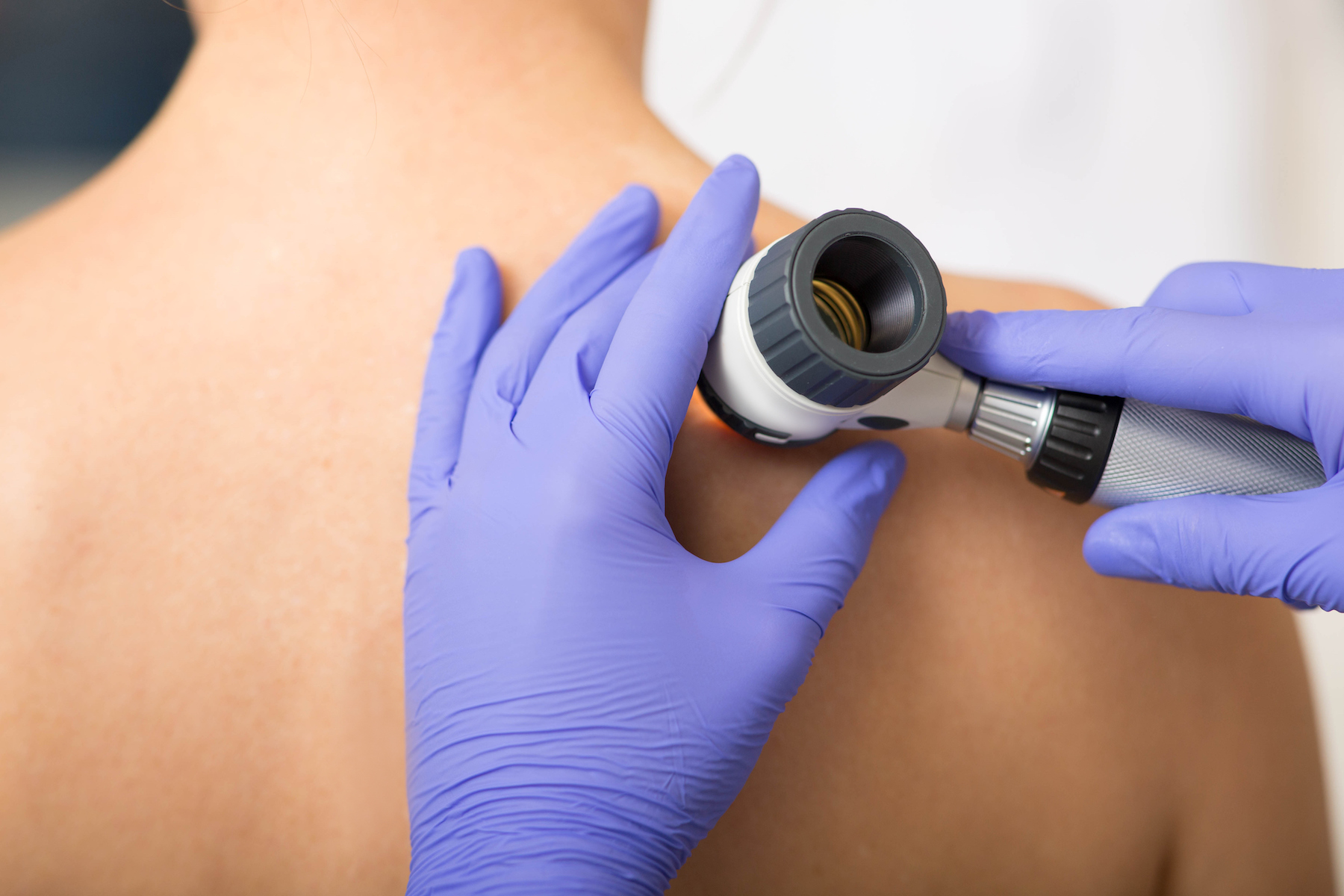
Dermatology: Clinical and Integrative Essentials (DCIE)
(DCIE-LearnSkin)
Elevate Your Dermatology Expertise with DCIE
The Dermatology: Clinical and Integrative Essentials (DCIE) program is designed to advance the knowledge and management of dermatological conditions for healthcare practitioners and allied health professionals. Tailored for PAs, NPs, RNs, and primary care practitioners, this expert-led program blends conventional and complementary medical models, equipping you with the skills needed to effectively address your patients' diverse skin concerns. Many patients are now using complementary and alternative medicine (CAM) therapies on their own, whether they disclose it or not, and are seeking practitioners who are knowledgeable with regard to alternative treatments. While these topics are not often covered in training, there is growing research within the field and a team of experts has created evidence-based modules you can implement in your practice right away.
This program goes beyond the traditional scope of dermatology by integrating evidence-based practices from various medical systems, offering a comprehensive approach to patient care. As integrative medicine gains momentum and dermatological conditions continue to be widespread, there is a growing need for practitioners who can offer whole-body and informed treatment strategies, particularly in dermatology. The DCIE program equips students with the skills to thoroughly assess and diagnose a wide range of dermatological conditions. Students will gain a deep understanding of integrative medicine, exploring the evidence behind various modalities, including diet, supplements, and probiotics, and learning to create and recommend integrative treatment plans with confidence. The program emphasizes critical thinking and problem-solving skills, recognizing that integrative medicine often requires nuanced and individualized approaches to patient care.
Students will gain a deep understanding of specific dermatological conditions, while learning to address patients' needs from an integrative perspective. The program includes end-of-module quizzes with case scenarios and targeted questions to challenge their knowledge, while roundtables with case discussions reinforce learning and promote collaboration. Learn from nationally recognized experts as they review clinical dermatology topics and explore evidence-based integrative topics in conjunction with conventional therapies.
Enroll now to access a 12-part online series, self-paced lectures, and monthly live roundtables, earning 35+ continuing medical education credits. A premium LearnSkin membership is included, offering unlimited CE/CME content, private masterclasses, and more to equip you with the tools for evidence-based integrative care.
Recommended For:
Healthcare professionals, including PAs, NPs, RNs, and primary care practitioners, looking to deepen their dermatology expertise
- Review clinical dermatology diagnostic and disease management skills
- Discuss the evidence for the use of diet, supplements, herbs, and probiotics for dermatological conditions
- Recall conventional standard of care and new therapeutic treatment options for dermatological conditions
- Develop integrative treatment plans for dermatological conditions
Apple Bodemer, MD
Asmi Sangvhi, DO
De Jarra Sims, ND
Fiona Rahbar, MD
Jason Hawkes, MD MS
Jennifer Ornelas, MD
Jenny Murase, MD
Joseph Alban, DAc MS LAc
Katherine Varman, MD FAAD
Peter Lio, MD
Raja Sivamani, MD MS AP
Valerie Stern, DMSc MPAS PA-C
PART ONE - Fundamentals of Dermatology
Intro to Integrative Dermatology
Dermatology Physical Exam and Building the Differential Diagnosis
Dermatology Histology 101: Introduction and Basics
Malignant Skin Lesions
Benign Skin Lesions
Procedures in Dermatology: Clinic and Surgical Overview and Surgical Techniques
Shared Decision Making and Patient Centric Care in Dermatology
PART TWO - Atopic Dermatitis and Prurigo Nodularis
Atopic Dermatitis Part 1: Pathophysiology, Skin Barrier, and Histology
Atopic Dermatitis Part 2: Therapy Overview
Itch, Prurigo nodularis and Its Treatment
Nutrition, Supplements, and the Microbiome in Atopic Dermatitis
Food Allergy Testing
PART THREE - Papulosquamous Eruptions
Seborrheic Dermatitis: Pathophysiology, Differential Diagnosis and Therapy
Psoriasis and Psoriatic Arthritis Part 1: Pathophysiology and Differential Diagnosis
Psoriasis and Psoriatic Arthritis Part 2: Therapies (Topical and Systemic)
Lichen Planus
Other Papulosquamous: Contact Dermatitis, Lichen Sclerosus, PLEVA, PLC, Grover's
Integrative Approach to Nutrition and Supplements for Psoriasis and Lichen Planus
PART FOUR - Adnexal Disorders: Acne,Rosacea and Hidradenitis Suppurativa
Acne: Pathophysiology and Different Diagnosis and Therapeutics
Rosacea: Pathophysiology and Differential Diagnosis and Therapeutics
Hidradenitis Suppurativa: Diagnosis, and Therapeutics
The Role of Nutrition, Supplements and Microbiome in Acne, Rosacea, and HS
PART FIVE - Infections
Bacterial Skin Infections
Fungal Skin Infections
Common Viral Infections in Dermatology
Parasitic Infections
PART SIX - Pigmentary Disorders
Melasma: Pathophysiology and Therapeutics
Vitiligo: Pathophysiology and Therapeutics
Other Pigmentary Disorders (Tinea Versicolor, Pityriasis Alba): Pathophysiology and Therapeutics
The Role of Nutrition, Supplements and Microbiome in Melasma and Vitiligo
Beyond Sunscreen: Topical and Systemic Approaches to Sun Protection
PART SEVEN - Hair and Nails
Hair Part 1: Anatomy and Pathophysiology
Hair Part 2: Diagnosis, Differential, and Conventional Treatment
Nail: Anatomy, Pathophysiology, Treatments
Integrative Approach to Hair and Nails: Nutrition, Diet, and Supplements
PART EIGHT - Inflammatory Dermatoses: Bullous Disease, Vasculitis Urticaria, Erythemas, and Drug Eruptions
Bullous Diseases:: : Pathophysiology, BP, PV, DH
Drug Reactions
Vasculitis: Small vessel and Henoch-Scholein Purpura
Neutrophilic Dermatoses (Dissecting Cellulitis, PG, HS)
Urticaria: Acute and Chronic (Includes Mastocytosis, Nutrition and Supplements)
Erythematous Rashes (Erythema Multiforme, Erythema Nodosum, Figurate Erythemas, Granuloma Annulare)
Venous Stasis (Cutaneous Manifestations of Vascular Disease)
PART NINE - Complex Medical and Systemic Manifestations
Connective Tissue Disease
Cutaneous Manifestations of Systemic Disease
Nutrition Related Conditions
Photodermatologic Disorders
Pregnancy Dermatology
Safety of Medications in Pregnancy
Dermatology in Newborns and Infants
PART TEN - Dermatology Pharmacology
Working with Steroids and Topical Anti-inflammatories
JAK and TYK2 Inhibitors: Conceptual Framework and Use
Using Herbs and Supplements Safely
Practical Approaches to Integrative Prescriptions
Phototherapy and Photodynamic Therapy
PART ELEVEN - Aesthetics
Introduction to Aesthetics
Novel Topical Ingredients and Cosmeceuticals
OTCs For Esthetics
Topical Herbs for Age Management
Dermatology Coding and Case Based Review
PART TWELVE - The Microbiome & Functional Medicine Testing
The Skin Microbiome
The Gut Skin Axis
Functional Medicine Testing: Stool Tests and OATs (Non-CME)
Introduction to Naturopathic Medicine